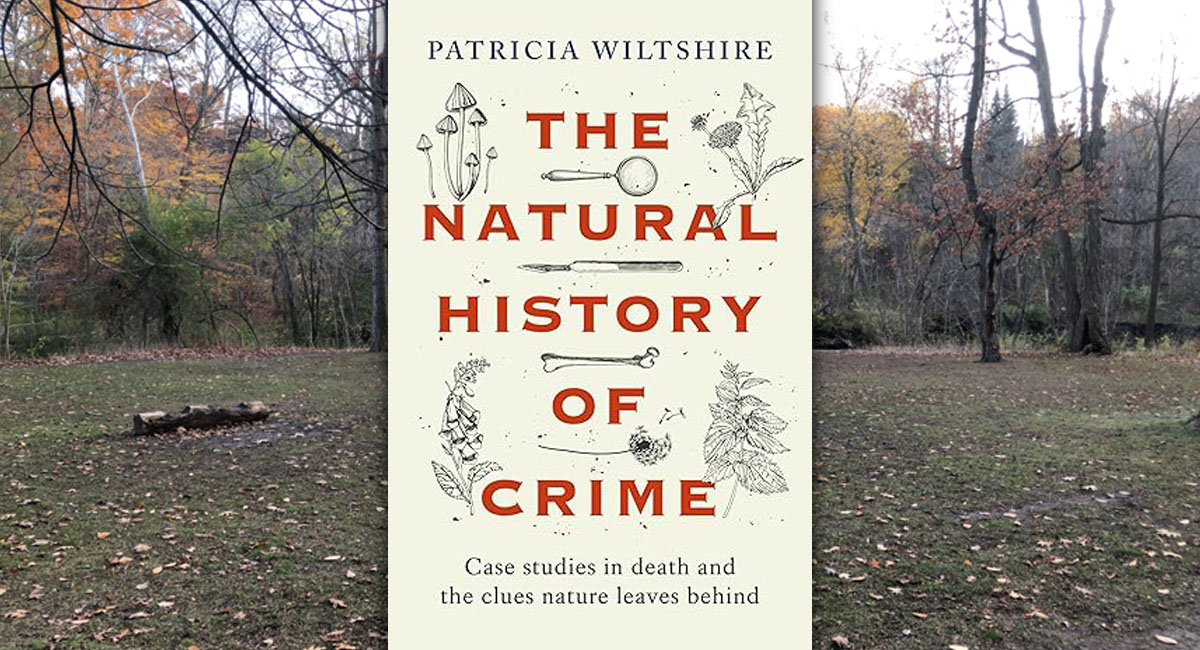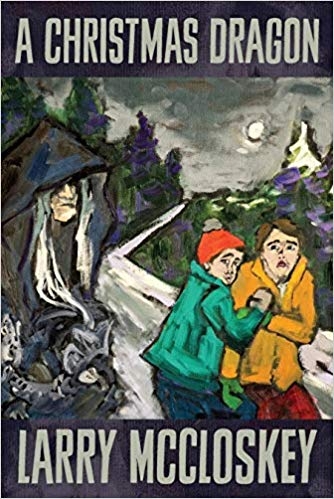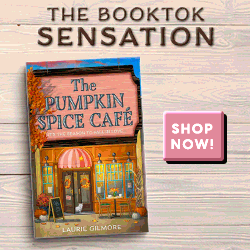
Nature’s Witness: Patricia Wiltshire and the Clues That Solve Crimes
Author: Patricia Wiltshire
Publisher: Mango
ISBN-13: 978-1684816972
The Welsh scientist Patricia Wiltshire has penned another book detailing her work as a forensic ecologist, a relatively new discipline she has helped to pioneer.
Where There’s Smoke….
On a mid July day in the summer of 2006 a few people living in Pontlottyn, Wales reported to local police seeing smoke rising from a point in the valley below. It was a strange place for there to be a fire, if that’s what it was. There wasn’t much around: a road above and a rail line not far below. Bracken ferns appeared to dominate the landscape between these two points. It was from among them the smoke seemed to be emerging. The police were immediately mindful of the potential connection between the observed smoke and reports from a few days earlier from witnesses who said they saw a bloody and hooded man being aggressively shoved into a white van. It was hard to imagine it wasn’t a case of foul play. The police investigated. Their worst fears were soon realized. The fire was due to a body being intentionally burned. The victim was the same person who people saw being shoved into the white van. He had been apparently driven to this location, dosed in petrol and set alight. The guilty parties went so far as to place branches on the victim’s chest – kindle to keep the fire burning. The family of the young man – he was 31 years old – could not understand how he was the target of people with such sinister intentions. He was shy and had a learning disability. His name was Barrie John Horrell.
In the early days of the investigation police reached out to Patricia Wiltshire who, in addition to being an accomplished academic, is a renowned forensic ecologist and author. In 2019 she published The Nature of Life and Death to considerable acclaim, both critical and popular. She picks up where she left off in her latest book, The Natural History of Crime: Case Studies in Death and the Clues Nature Leaves Behind. In both Wiltshire gives the reader a guided tour of what is a relatively new discipline – forensic ecology – that she has helped to pioneer. The crime in question is one among many Wiltshire documents in the most recent book. The investigators were seeking her expertise to help them solve the case. In particular they wanted help with a few crucial questions, the answers to which might help them to more definitively connect certain suspects to the crime scene. How long was the victim’s body at the site where it was found? Could she identify the paths those who committed the murder would have taken both to and from the crime scene? Would she be able to link the suspects to the crime scene? The questions point to the role of a forensic ecologist in this sort of investigation: to identify the clues nature leaves not only at a scene of a crime but also on the crime’s perpetrators. In so doing she can help develop a series of botanical profiles that, in the final analysis, can establish links between suspects and a victim or a crime scene that might have otherwise gone undetected.
By writing about her travails as a forensic ecologist Wiltshire is tapping into the public’s insatiable fascination with crime, both fictional and true. Indeed the crimes she investigates can seem as though they’re straight from scripts for the sort of shows seen on Netflix or Britbox. Not all involve murder or death but the vast majority do. They all have a tragic and grisly dimension to them. There are the victims, some of whom are young children or even babies who have inexplicably disappeared and met with the most horrific kind of foul play. There are the inconsolable parents whose world has been shattered beyond understanding or redemption. There are drunkards and lost and lonely souls whose lives take dark turns. There are the cordoned off crime scenes and the professionals who struggle to make sense of the clues contained therein. There is mutual suspicion among colleagues that sometimes tips over into mutual disdain. There is the ever present possibility of old fashioned male chauvinism. Wiltshire is an older woman who couldn’t possibly be one of the most foremost experts in her field – or so goes the thinking of some of the men with whom she has worked. There is courtroom drama. As an expert witness Wiltshire has had to defend her findings against seasoned and sometimes unsavoury defence attorneys out to discredit her. And through it all is the science that works to shed light, mostly on human beings’ unique capacity for wickedness and, in so doing, contribute to the course of justice.
For perhaps obvious reasons, the job of forensic ecologist is not easy or for the faint-hearted.
There is, to begin with, the unique skill set required. Wiltshire has expertise in a broad range of sciences, including botany, mycology, bacteriology, palynology. A forensic ecologist draws on her knowledge of these disciplines to help solve the puzzles that crimes present to those investigating them. In addition to this sort of expertise, one requires a capacity for steely detachment. Of this Wiltshire has in abundance, even though various cases featuring excessive brutality will, she says, haunt her for the rest of her life. Still it’s her steely detachment that stands out. Without it, the emotional and psychological burden of having to bear witness to lives so senselessly and cruelly lost would be, well, too much to bear. Wiltshire, from this perspective, has the ideal intellectual and emotional profile to excel in her profession. Yet she insists that she has stumbled not only into this role, but every other major role she has assumed in her long and eventful life. She likes to declare she is without an ambitious bone in her body.
Really? For all of Wiltshire’s candour, there is something disingenuous about such claims. Most of us, it is true, stumble into what we do to make a living. Not everyone is ambitious. But could this be true of someone who gains expertise in a wide range of scientific disciplines, teaches at prestigious universities, works as a forensic ecologist and writes best selling books about the experience? Doesn’t doing all that require a whole lot of deliberate planning and at least a modicum of ambition? One would be forgiven for thinking so.
On the other hand, maybe Wiltshire’s childhood better explains why she became a forensic ecologist.
A Traumatic Childhood
Although she now lives in a well to do town just outside of London, Wiltshire was born and raised in Wales in a village called Cefn Fforest. In a 2020 interview she recalled with a sense of horror a particular scene from her childhood. It was a Friday when she and her classmates had been let out from school early. She went home formulating an innocent plan. Instead of surprising her mother, she would scare her. There was nothing mean spirited about her idea. It was imagined and then carried out in a spirit of fun and amusement. The young Patricia arrived home and hid in a room next to the kitchen, where her mother was busy preparing something. Blissfully unaware of her child’s presence in the house, her mother then left the kitchen holding a tray of scalding hot oil. As she turned the corner, the young Patricia yelled “BOO!” Her mother, in a state of instant terror, threw the oil into the air, its trajectory towards Patricia. The oil landed on her daughter’s head and streamed down her body. The pain was so excruciating as to constitute an out of body experience. As Wiltshire describes it, she could hear the screams, the howls of pain as though they were coming from another child. Perhaps this was one of the body’s coping mechanisms, a way of making that initial explosion of agony infinitesimally less excruciating. She is scarred for life.
Her parents’s separation was the catalyst for a more permanent separation from her father, who her mother forbade to even talk about, let alone see. Quite suddenly at a young age, she was forced to live as though she no longer had a father. Not that living with her parents was a healthy experience. Her parents’ relationship was volatile and often toxic. Her father was unfaithful; in a small Welsh community at the time this was a grave source of humiliation. Her mother would not only never forgive him; his memory had to be erased, as though he never existed. This did little to alter her mother’s outlook: both before and after separating from her husband, she was miserable, according to Wiltshire. The child might have withered under the strain, as young people so often do in such circumstances. Wiltshire instead chose to change her surroundings. She left Wales for England at a young age, without a plan but that hardly mattered. As Wiltshire writes, her life has always unfolded in this unplanned, haphazard sort of way. In England, she would soon discover she had an aptitude for the sciences.
Wiltshire’s childhood memories do not all revolve around physical pain and her parents’ estrangement or her mother’s forbidding and unhappy presence. As a young girl living in a hilly Wales community Patricia could roam through the countryside in a way that seems almost impossible to imagine today, at least by the over protective standards of most of North America. Freedom to explore impacts a child in ways that are hard to measure, but no less vital to discern. For her, that freedom to explore occurred in the absence of any fear of being harmed. Even more important, it inspired both a curiosity about the natural world and a deep appreciation of the natural cycles of life and death. Death, Wiltshire is always quick to remind a reader or an audience, is fundamental to life. Human beings cannot escape from this elementary truth, no matter how hard we might try.
Wiltshire’s experience of school was hardly uniform. Nevertheless in grammar school her teachers were loathsome in the way we associate with bygone eras. They were joyless, strict, forbidding and quick to humiliate. This was the price for transgressions, however mild or inoffensive. Wiltshire describes a sort of teacher and a sort of school that seem relics of an unenlightened past. Teachers are no longer trained to drain the joy out of learning or to be ruthless disciplinarians. Schools are no longer meant to resemble prisons in their modes of operation. Although it was a place Wiltshire loathed, it did not diminish her desire to learn.
These features of her childhood are the threads that connect Wiltshire’s experience as a young girl and the type of person and scientist she became. It’s evident when reading her books or listening to her give an interview. The pain and the trauma she experienced as a child instilled a toughness of both mind and spirit and a relentless curiosity. Life’s brevity and the possibility of it being snatched away unexpectedly inspired a sort of fearlessness to try new things. “Nothing ventured nothing gained is my motto, hackneyed though it may be” she has said. This is also why she can express impatience with those who use their personal hardship as a crutch. Better to just get on with things. She has a deep knowledge of various academic disciplines but emphasizes equally the knowledge derived from wandering about areas where a grisly murder has been committed. She thrives in such settings. The reader senses it when she describes collecting samples as she walks through a muddy field or forest or while on the ground as a heavy rain falls. Learning in such contexts more closely resembles life than the stuffy and relatively sterile confines of a classroom. Both – learning and life – are messy and challenging but, when done right, infinitely rewarding.
Forensic Ecology
The use of DNA is the most visible extension of science’s reach in criminal investigations. DNA is useful, of course, because of the unique traces it leaves behind, either at a crime scene or on the victim. Forensic ecology’s premise is similar. The natural world leaves its own unique traces on both victims and perpetrators. Those traces might be discovered in both likely and unlikely places. The likely places include the soles of shoes or the sleeves of shirts and jackets or the pants worn while a crime was committed. The unlikely places, among many others, might be on car mats or vehicle tires.
Forensic ecology emerges out of other sciences. Indeed Wiltshire was not trained as a forensic ecologist; on the contrary she herself has, perhaps more than any other scientist, developed the science. Her ability to do so is firmly rooted in her training in the study of botany, palynology, bacteriology and mycology. Botany is defined as “the scientific study of plants, including their physiology, structure, genetics, ecology, distribution, classification, and economic importance.” Palynology is the study of pollen grains and spores. Bacteriology, as the name more clearly suggests, the study of bacteria. Mycology is the study of fungi. An astrophysicist is the sort of scientist enthralled with the vastness of the universe. A scientist with expertise in these various ecological disciplines might not be so different. Landscapes do not stretch to infinity, it is true, but the worlds they contain are vast in a way that is similarly mind boggling. Wiltshire seems especially fascinated by fungi. There is, to begin with, their resilience. Fungi have been on the earth for as long as 1.5 billion years. For a long time, according to Wiltshire, they were misunderstood and incorrectly classified as plants. Plants, of course, derive energy directly from the sun through photosynthesis. This is not true of fungi, which more resemble microorganisms that consume food “that has already been produced.” But the most important distinction between plants and fungi revolves around their respective ecological roles. “Plants build up and fungi breaks down,” Wiltshire writes.
Pollen spores have different shapes and their surfaces vary in texture and design. Hence the importance of the microscope to Wiltshire’s work. She constantly refers to the hours spent hunched over her own, studying samples in the hope they will yield some vital clue. As she describes, a pollen spore might be in the shape of “an orb pitted with tiny holes.” Conversely, it might resemble more of a “dumbbell, its walls perforated with gradations of apertures.” The ability to discern such differences in shape and size is foundational to the science. Armed with such knowledge, Wiltshire can begin to appreciate the botanical profiles an article of clothing or a vehicle tire carries on them. Such profiles, in turn, help to identify the landscapes such articles have been.
Yet any definition of forensic ecology or description of the discipline is bound to be only partial and thus incomplete. The discipline may have emerged in part from the leaps and bounds made in botany, mycology, bacteriology and palynology. Nevertheless it doesn’t mean, for example, that fungi will assume a central role in every crime scene Wilthshire investigates. Similarly, her role as a forensic investigator varies depending on the state of an investigation. In some cases, she might be searching for botanical clues to determine whether a suspect was at the crime scene. In other cases, as detailed in the book’s opening chapter, there’s a mystery at the heart of an apparent crime: how did this man found bleeding profusely in his own bedroom come to have not one but two approximately 45 cm long knife wounds in his rectum? Or consider another scenario: a person guilty of murder has been identified and apprehended but the whereabouts of the victim is unknown. Can Wiltshire construct a botanical profile to help locate the body? Perhaps most tantalizingly, the botanical profiles Wiltshire constructs can have a dynamic element. That is to say, they can give rise to an informed sense of the movements and possibly the state of mind of the guilty party or parties.
The way in which these different elements of her work can come together is best illustrated with an example. In her book The Nature of Life and Death: Every Body Leaves a Trace, Wiltshire describes the laborious but still intuitive process involved in locating the body of a murdered young woman. Joanne had gone missing on Valentine’s Day. Her boyfriend initially declared he had no idea where she had gone or what might have happened to her. He publicly pleaded for her safe return. The innocent and grief stricken boyfriend, however, was a role he could not assume for very long. He soon acknowledged his crime: he had murdered his girlfriend in a fit of pique that quickly escalated into violent rage. He then buried her body but did so as though in a deep fog. He had no idea where he drove to or where the body was buried. The mystery of the young woman’s disappearance was thus solved but only partially. This clearly could not be where the tragic episode ended. For her bereaved parents especially, Joanne’s body had to be found, their dear daughter at the very least given a proper burial. Wiltshire’s task was thus not to help solve the crime, but rather to help find the body.
An initial analysis of the crime’s botanical traces yielded some elementary facts. The profile indicated there was pine and western hemlock in the immediate vicinity. Both types of trees are ‘commercially important’ conifers. Birch was the most dominant of the deciduous trees on site. There were others: oak, hazel, beech, heather as well as ferns and grasses. Together they gave rise in her imagination to a basic profile. The boyfriend’s botanical profile suggested a place in keeping with what one would find at a nursery but also ‘woodland and woodland edges.’
The clues that help to solve the puzzle of someone’s whereabouts are often not obvious. Deduction is among the skills on which Wiltshire must draw. The sort of nursery Wiltshire initially imagined would be dominated by spruce trees. Yet there was no evidence of spruce pollen in the botanical profile. Could such an absence be proof that Wiltshire’s initial image was of the wrong sort of place? To think so would be a reasonable inference to draw – but wrong. Not until they are mature do spruce trees release much of their pollen. Just prior to that point of maturity – ‘sexual maturity’ – is when commercial foresters fell the trees. Thus one would not expect to find many botanical traces of spruce even in an area where it is the dominant species.
The unique image Wiltshire is ultimately able to conjure is typically preceded by a series of ever more precise ones. To reach the point of certainty Wiltshire might draw on other types of knowledge. Police profiles of killers, for example, indicate that murderers generally do not carry the victim’s body more than 100 metres. In this particular case, the murderer was using a pitchfork; pitchforks, however, cannot be used to dig deeply. The effort would be far too tedious and time consuming and, in the middle of February, ultimately fruitless. They are useful merely as a way of distributing twigs and other loose brush. The sort of woodland Wiltshire had already imagined are characterized by uneven ground dotted with shallow and often hidden ditches. The images started to get more precise. The young woman wasn’t buried, but rather covered with brush as she lay in a ditch not far from the road where the murderer stopped his vehicle to dispose of her.
Over time the pictures Wiltshire is able to conjure are not simply of the place a deceased body is located. The pictures formed start to include the murderer’s thought process and state of mind. She imagined Dylan’s experience as he resolved that the young woman he just murdered had to be buried, the evidence of her tragic fate all but eliminated. Carrying her limp and lifeless body on a winter’s night was more challenging than he anticipated. It was cold and dark and the terrain he was traversing highly uneven. Ditches might have seemed like traps he could not escape. The botanical profile indeed suggested one of his feet fell into a ditch. The panic he was experiencing would have been suddenly heightened. He would not have walked far. Rather than go further to bury the body, he thought, he would lay her in the ditch and cover her with what he could scrape together. Twigs and brush and grass: enough, he would desperately hope, that no one would spot the body, either from a distance or up close. He would race back to his vehicle, likely trembling with fear. He would run not only in a bid to escape the wintery darkness, but to also somehow relieve his guilty conscience. Ahh but this was no simple task. The horrible ordeal that he himself set in motion was only just beginning. There was still so much to do. He would need to gather himself and forge his story. He would need to plot his next moves.
Investigating A Heinous Crime
Wiltshire returns to Wales to investigate the case of the victim found dead and burned among bracken ferns. But as with any story she tells, Wiltshire allows her focus to shift away from the crime in question. Her mind wanders and she’s happy to go where it leads. She recalls finding herself driving through the villages among South Wale’s hills and valleys where she grew up and where she and a good friend would roam about. Uncharacteristically she is feeling nostalgic for that time in her life. Wiltshire begins to daydream when she finds herself atop a hill. It’s not simply that the hill offered her a special vantage point to look at the valleys below and beyond. It was that she felt a lightness of being, as though she was hovering above the landscape or that she could fly away. It’s the sort of reverie that seems contrary to her disciplined and otherwise unsentimental disposition.
Age and experience soon gives rise to a more sobering appreciation of the place that so shaped her childhood. Both the landscape and the communities that formed among these hills and valleys, she goes on to write, were shaped by nearly two centuries of coal mining. These were once thriving mining towns. Coal production and the incessant harvesting of iron and limestone for a long time acted as magnets. People migrated from elsewhere in a bid to make a living in these tough and often inhospitable places. It was a hard way to do so. Nevertheless populations grew and communities developed but always at the expense of the land. Valleys and hillsides were denuded. Rivers were polluted. Coal waste was stored on mountains, thereby creating thousands of potentially hazardous ‘mountain tips’ as they’re called. The waste contained therein can be unexpectedly unleashed by a combination of excessive rain and groundwater, as happened in 1966 in Aberfan. On an October day that year, coal waste descended like lava from a volcano on a school filled with unsuspecting students and staff. Hundreds were killed. In these ways and others coal mining was proving to be murderously unsustainable. Further hardship eventually followed. Wiltshire highlights the miners’ strike in the mid 1980s as a turning point. It did not end favourably for the unions or the communities. As so many did during that era, the strike and its outcome thus engendered resentment, bitter and lingering, followed by dislocation, the effects of which are still visible today. Communities hollowed out. Generations of boys and young men especially have been unable to transcend the uneven legacy of coal.
But what about her role in the investigation of the grisly murder of Barrie John Horrell? Eventually Wiltshire describes her tasks after arriving at the scene of the crime. She begins to survey the landscape. Wiltshire repeatedly highlights the uniqueness of a botanical profile. One could take separate samples from the same garden, she writes, and they would look different upon closer examination. Nevertheless her immediate concern was that any botanical profile of this particular site would be not be distinctive enough. In the absence of a distinct profile, she may not be able to locate the suspects at the crime scene. Put another way, whatever was found on the suspects’ clothing would not necessarily be revealing or incriminating if it could be found anywhere else in the surrounding areas.
That concern was soon laid to rest. There were, to begin with, anthills nearby that could be significant. By virtue of building their hills ants modify the soil, an effect of which is to stimulate the growth of both fungi and bacteria. There was at least a single foot print on one of the hills. Investigators assured Wiltshire not one of them set foot on it, suggesting it could be one of the perpetrators. If so there could be traces of bacteria, pollen or fungi on that person’s shoes or clothing.
Her investigations yielded another crucial insight. There were plants – thistles and ragwort mostly – close to where the body was found that had been trampled upon. The plants would have left traces on the shoes of anyone who had done the trampling. What’s more, by virtue of being subject to this sort of burden, the thistles and ragwort would bend. Eventually the plants reorient themselves, another potentially revealing source of information. Knowing the time it takes for such plants to resume their normal position would shed light on when the body was brought to the site. Moreover the direction of the stems would yield potential insight into the movements of the culprits. Were they going downslope, towards the railway? Or upwards towards the road?
Then there is the state of the vegetation immediately underneath the body. That the victim’s body was so badly burnt would affect the condition of the ground below. So too would the release of bodily fluids. Wiltshire’s aim was to assess the ground in a bid to determine how long the body had been laying on top of it.
Those were among the important features of the landscape close to where the victim was found. But as Wiltshire is quick to point out, the shifting landscape in the immediate areas was also critically important to assess. As she moved downwards towards the rail line, she noted the richer soils and the wider assemblage of plants that soil made possible. Moving further the plants give way to trees and bigger shrubs. The trees, often far in the distance, could shape the botanical profile used to link the killers to the crime site. The pollen from wind pollened trees can drift for miles before settling on the ground.
The suspects were charged and convicted of first degree murder. What’s most noteworthy about the tragic tale, however, is not the way Wiltshire was able to go about constructing botanical profiles used to further incriminate the those who were found guilty. The police would have had a sound case even had Wiltshire not made her contribution. Rather what’s most striking is the nature of the petty grievance that inspired a vindictiveness that knew no bounds. It didn’t take much at all for those guilty to think Barrie John Horrell deserved to die in a most gruesome fashion.
A Meandering Style
Wiltshire’s meandering storytelling style is a mixed blessing for the reader. The style can yield rewards, as it does when she ruminates on Wale’s geological landscape and how it shaped the communities that were built and thrived before going through a prolonged period of decline and hardship. In another chapter, she offers the reader a fascinating account of syndromes involving self harm or doing harm to one’s baby, usually in a bid for attention. In so doing she recalls a student who shared with her a troubling secret: she had an incurable illness that had rendered her hopelessly depressed. To make matters worse, her home life was a train wreck. The student pulled back her sweater’s sleeves, revealing her horribly pockmarked arms underneath. These were among the visible manifestations of her condition. Wiltshire was sympathetic and offered help only to learn later that the student’s story was completely contrived. The marks on her arms were self-inflicted. She did not have an incurable condition. The student, in other words, was ill, but mentally as opposed to physically or genetically. Her story is not connected to the investigation Wiltshire goes on to describe. Nevertheless, it provides a useful reminder: not everyone or everything is as they seem.
In other examples, however, her tendency to veer off course leads Wiltshire to thoughts and ideas that seem remote and disconnected to the crime in question. One chapter in The Natural History of Crime begins with the sort of knock against political correctness and ‘wokeism’ that’s far too fashionable these days. Bizarrely, she moves on to the theme of architectural design in old places like Abedure, Wales with its magnificent, ancient brick homes that have withstood the ravages of time. Modern homes, by sharp contrast, are designed on the cheap. In addition to being poorly constructed they are dull and without character. Too many buyers, including Wiltshire herself, are unsuspecting dupes. The reader waits in not quite breathless anticipation to understand the connections between these already disparate themes – political correctness and modern home design – and the apparent crime that she was asked to investigate and which she goes on to discuss. Alas, the wait is in vain.
Wiltshire is 82 years old. Age has not dulled her mind or, seemingly, diminished her reserves of energy. She is a marvel. Nor is she given to sentimentality or nostalgia. Yet occasionally she can read like a certain stereotype of an older person who thinks more recent generations are too pampered and have it too easy. One chapter in particular features a long lament about the delicate sensibilities of too many young people today. This has been at the expense of many individuals’ readiness to assume personal responsibility for their lives. They would rather live on the ‘dole’, watch television and drink beer all day. Should they bring unwanted children into this world they tend to have little or nothing to do with them. That the guilty in this particular case fit this sort of profile doesn’t make such a sweeping characterization any more valid. It’s one of the few discordant and unscientific notes Wiltshire strikes.
For all of her meandering tendencies, Wiltshire sheds little light on the victims whose murders she’s helping to solve or whereabouts she’s helping to determine. This is understandable, maybe even necessary. Wiltshire does not know these victims. She never experienced them as living and breathing human beings. By the time she encounters them they typically have been long dead. They are corpses to her, required objects of study in the bigger pursuit of justice. Yet the omission of details creates holes in the stories Wiltshire tells. The bare facts the reader learns about the victims never seem quite enough; the reader wants to learn more. Who was this young woman killed by her boyfriend in a spasm of rage? Who was this young girl whose life was so ruthlessly snuffed out? Who was this young man who met such a cruel and tragic end in a remote South Wales valley? Their lives, like so many others Wiltshire documents, ended in violence and tragedy. It seems only right that the world should learn about who they were and what they were like when they were alive.








